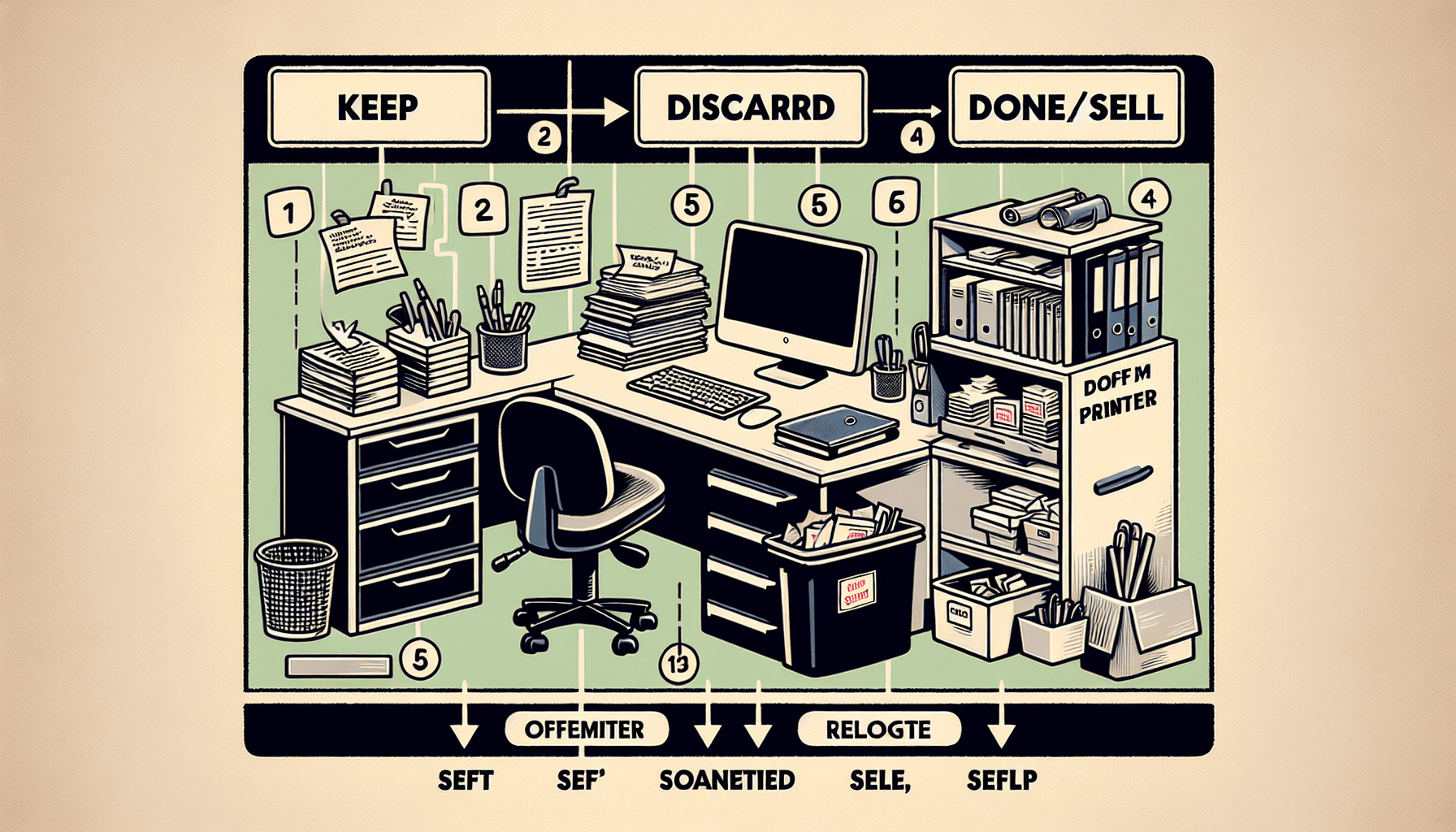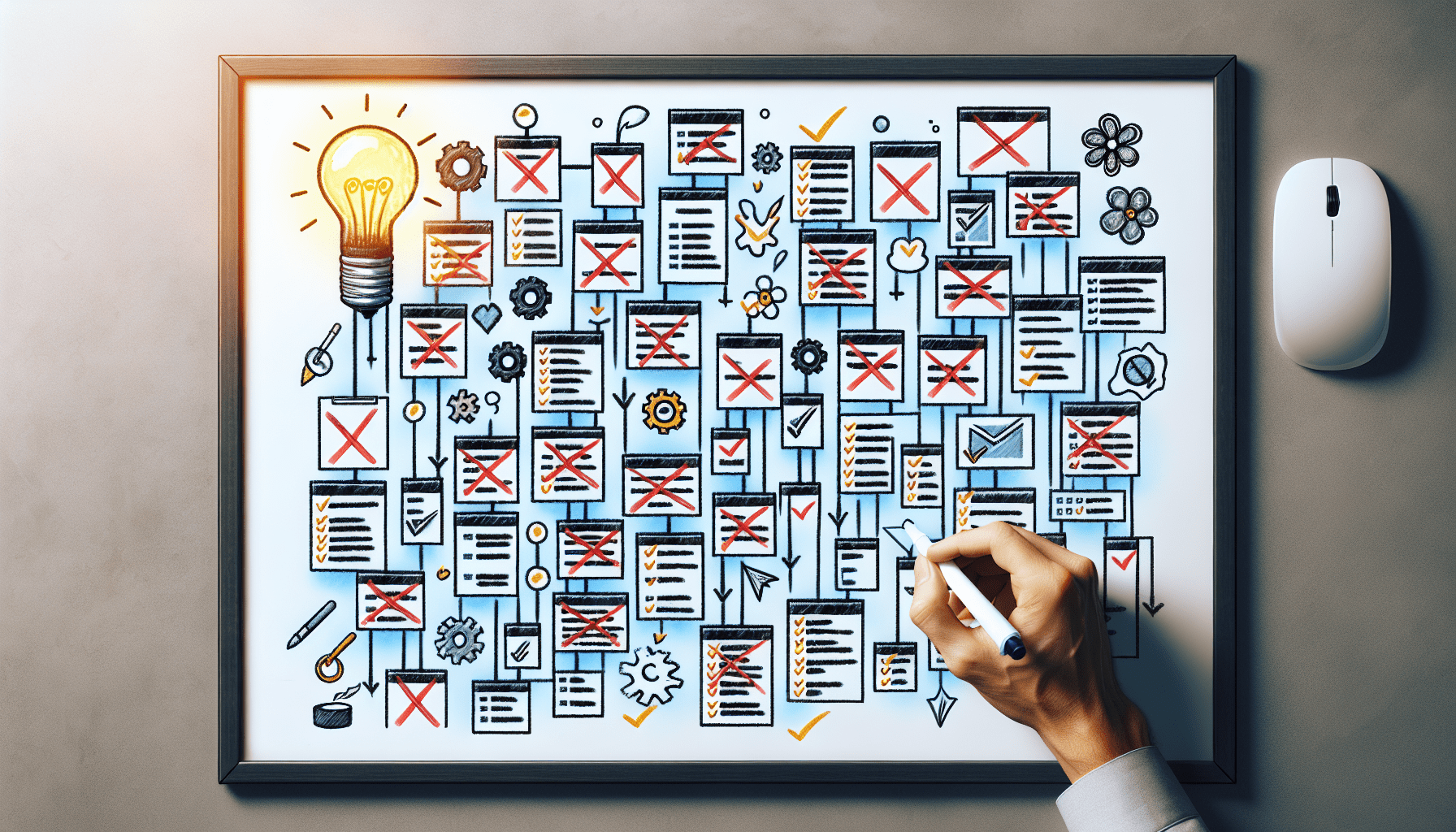
The 5S System: Organizing Your Workspace For Maximum Efficiency

Imagine walking into a clean, organized workspace where everything has its designated place and clutter is non-existent. Sounds appealing, right? Well, with the 5S System, you can achieve just that. This article will guide you through the principles of this system, providing practical advice, real-life case studies, and step-by-step guides on how to declutter your workspace and create an environment that promotes maximum efficiency. Say goodbye to searching for misplaced documents or wasting time on unnecessary tasks, and say hello to a more streamlined and productive workday. Let’s dive into the world of the 5S System and transform your workspace for the better.
Introduction to the 5S System
Welcome to the comprehensive guide on the 5S system! In this article, we will delve into the principles and benefits of implementing the 5S system, as well as provide practical tips, case studies, and solutions to common challenges. If you’re looking to organize your workspace for maximum efficiency, you’ve come to the right place!
What is the 5S System?
The 5S system is a method that focuses on organizing and standardizing workspaces to improve efficiency, productivity, and safety. The five S’s stand for Sort, Set in Order, Shine, Standardize, and Sustain. Each phase of the 5S system plays a crucial role in transforming a cluttered and chaotic workspace into an organized and streamlined environment.
Origins of the 5S System
Originally developed in Japan, the 5S system was derived from the Lean Manufacturing principles of the Toyota Production System. The 5S system was created to eliminate waste, reduce errors, and create a more efficient work environment. Since its inception, the 5S system has spread globally and been adopted by various industries and organizations.
Benefits of implementing the 5S System
Implementing the 5S system in your workspace offers numerous benefits. Firstly, it enhances productivity by reducing time wasted searching for tools, equipment, or information. Secondly, it improves safety by promoting cleanliness and organization, thus preventing accidents. Additionally, the 5S system fosters employee morale and engagement, as a clean and organized workspace contributes to a positive work culture. Lastly, the 5S system lays the foundation for continuous improvement by establishing a habit of maintaining order and efficiency.
Sort
Understanding the Sort phase
The first step in implementing the 5S system is the Sort phase. During this phase, you assess and categorize items in your workspace as either essential or non-essential. By eliminating unnecessary items, you reduce clutter and create a more efficient and organized work area.
Identifying essential and non-essential items
To determine what is essential and what is non-essential, ask yourself a few key questions. Do I use this item frequently? Does it serve a specific purpose? If the answer is yes, it is likely essential. If the item hasn’t been used in a long time or its purpose is unclear, it is likely non-essential.
Creating categories for sorting
Once you have identified essential and non-essential items, it’s important to create categories for sorting. Common categories include “keep,” “discard,” “donate/sell,” and “relocate.” This categorization process helps streamline the organization process and ensures items are placed appropriately.
Developing a sorting plan
To effectively sort your workspace, develop a plan that outlines the steps and timeline for sorting. Start with a small area or specific category, and gradually progress to larger areas or more complex categories. Set realistic goals and enlist the help of colleagues if necessary. Remember, the purpose of sorting is to declutter and create a more efficient workspace.
Set in Order
Exploring the Set in Order phase
The Set in Order phase is all about organizing your workspace to maximize efficiency. This phase involves determining the optimal layout, organizing tools and equipment for easy accessibility, and implementing visual cues for efficient storage.
Determining the optimal layout for your workspace
When considering the layout of your workspace, think about flow and functionality. Arrange frequently used items within arm’s reach to minimize unnecessary movement. Consider the natural workflow and arrange items in a logical order. Maximize space by utilizing shelving, hooks, and bins to keep your work area tidy and accessible.
Organizing tools and equipment for easy accessibility
To ensure easy access to tools and equipment, establish designated areas or stations for specific tasks. Keep frequently used tools within close proximity, while less frequently used items can be stored further away. Clearly label or color-code storage areas to easily identify where items belong. This organization system saves time and reduces frustration when searching for tools.
Implementing visual cues for efficient storage
Visual cues are powerful tools for maintaining an organized workspace. Use color-coded labels, charts, and signs to indicate where items should be stored. Integrate shadow boards or tool outlines to visually guide employees on proper storage locations. Visual signals make it easy for everyone in the workspace to understand and maintain organization standards.
Shine
Overview of the Shine phase
The Shine phase focuses on cleanliness and maintaining a hygienic workspace. This phase involves creating a cleaning routine, maintaining cleanliness and hygiene, and identifying and addressing potential hazards.
Creating a cleaning routine
Developing a cleaning routine ensures that cleanliness becomes a habit. Assign specific cleaning tasks and frequencies. Regularly schedule tasks like sweeping, dusting, and wiping down surfaces. Encourage employees to take ownership of their work areas and maintain a high standard of cleanliness.
Maintaining cleanliness and hygiene
Maintaining a clean and hygienic workspace is essential for both productivity and employee well-being. Establish guidelines for the proper disposal of waste and encourage employees to clean up after themselves. Regularly sanitize shared surfaces and provide necessary cleaning supplies.
Identifying and addressing potential hazards
During the Shine phase, it’s important to identify and address potential hazards in your workspace. Conduct regular risk assessments to identify areas that pose a safety risk. Fix or address any hazardous conditions promptly to ensure the well-being of all employees. Creating a safe and clean environment is essential for maximizing efficiency and productivity.
Standardize
Understanding the Standardize phase
The Standardize phase involves establishing standard operating procedures, developing checklists and guidelines, and implementing consistent work practices. This phase ensures that the organization and efficiency achieved in previous phases are maintained consistently.
Establishing standard operating procedures
Standard operating procedures (SOPs) are essential for maintaining consistency in work practices. Document and communicate clear SOPs for each task or process in your workspace. SOPs serve as a reference point for employees and help streamline operations, reducing errors and delays.
Developing checklists and guidelines
Checklists and guidelines provide employees with a visual aid to follow and ensure tasks are completed consistently and accurately. Develop checklists for daily, weekly, and monthly routines. These can include cleaning tasks, equipment maintenance, or inventory checks. Regularly review and update checklists to account for changes in processes or requirements.
Implementing consistent work practices
Consistency is key to maintaining an organized workspace. Encourage employees to follow established SOPs and guidelines. Incorporate regular training and feedback to reinforce the importance of consistent work practices. By implementing these practices, you create a culture that values order and efficiency.
Sustain
Exploring the Sustain phase
The Sustain phase focuses on continuous improvement and monitoring, encouraging employee participation, and developing long-term habits for sustained efficiency.
Continuous improvement and monitoring
Continuous improvement is at the core of the 5S system. Regularly assess your workspace to identify areas for improvement. Encourage employee feedback and suggestions for further enhancements. Monitor the effectiveness of the 5S system and make necessary adjustments to maximize its benefits.
Encouraging employee participation
The success of the 5S system relies on employee participation and ownership. Foster a culture that values and encourages employee engagement. Involve employees in decision-making processes and give them the opportunity to provide input. Recognize and reward employees who actively contribute to maintaining an organized and efficient workspace.
Developing long-term habits for sustained efficiency
Creating long-term habits is crucial for sustained efficiency. Make the 5S system part of your company’s culture by integrating it into training programs and onboarding processes. Regularly reinforce the principles of the 5S system through team meetings or visual reminders. With time and practice, maintaining an organized and efficient workspace will become second nature.
Case Studies: Successful Implementations of the 5S System
Case study 1: XYZ Company’s transformation
XYZ Company, a manufacturing firm, implemented the 5S system and experienced a remarkable transformation. By sorting and organizing their workspace, they eliminated unnecessary items and reduced clutter, resulting in enhanced efficiency and productivity. The Set in Order phase allowed them to optimize their layout, making tools and equipment easily accessible. Regular cleaning routines during the Shine phase improved hygiene and safety. Through the Standardize and Sustain phases, XYZ Company established standard practices and created a culture of continuous improvement. The 5S system played an instrumental role in their success.
Case study 2: The impact of the 5S System on productivity
ABC Corporation, a service-oriented company, implemented the 5S system and realized significant improvements in productivity. By implementing the Sort phase, they were able to identify and eliminate non-essential items, minimizing distractions and maximizing focus. The Set in Order phase streamlined processes, reducing time wasted searching for tools or information. The Shine phase ensured a clean and hygienic workspace, eliminating potential safety hazards. Through the Standardize and Sustain phases, ABC Corporation maintained consistency and established long-term habits for sustained efficiency, resulting in increased productivity and employee satisfaction.
Case study 3: Lessons learned from implementing the 5S System
123 Organization, a consultancy firm, shares valuable lessons from their experience in implementing the 5S system. They emphasize the importance of employee buy-in and creating a shared vision for an organized workspace. By involving employees in the decision-making process and providing training and support, 123 Organization successfully implemented the 5S system. They also highlight the need to address storage limitations and adapt the system to different workspaces. Flexibility and continuous improvement were key factors in their success.
Tips for Implementing the 5S System
Educate and train employees
Educating and training employees on the principles and benefits of the 5S system is crucial for successful implementation. Conduct workshops or training sessions to explain the concepts and provide practical examples. Share success stories and case studies to inspire and motivate employees.
Assign responsibilities and establish accountability
Assigning responsibilities and establishing accountability ensures that each employee understands their role in maintaining an organized workspace. Clearly communicate expectations and encourage employees to take ownership of their work areas. Regularly evaluate progress and provide feedback to reinforce accountability.
Encourage teamwork and collaboration
The 5S system is most effective when implemented as a team effort. Encourage teamwork and collaboration by involving employees in the decision-making process and problem-solving. Foster a supportive and inclusive work culture that values everyone’s contribution to maintaining an organized and efficient workspace.
Celebrate milestones and successes
Acknowledging and celebrating milestones and successes is an important aspect of implementing the 5S system. Recognize individual and team achievements and publicly acknowledge progress. This positive reinforcement encourages continued commitment to the 5S system and motivates employees to maintain an organized and efficient workspace.
Common Challenges and Solutions
Resistance to change
Resistance to change is a common challenge when implementing the 5S system. To overcome this resistance, communicate the benefits of the system and involve employees in the decision-making process. Address concerns and provide training and support to help employees adapt to the new practices.
Maintaining motivation and momentum
Maintaining motivation and momentum throughout the implementation process can be challenging. Regularly communicate progress and benefits to keep employees engaged. Reinforce the importance of the 5S system and recognize and reward employees who actively contribute to maintaining an organized workspace.
Addressing storage limitations
Limited storage space can pose a challenge when implementing the 5S system. Consider creative solutions such as utilizing vertical space, implementing mobile storage units, or investing in additional storage options. Prioritize essential items and evaluate if some items can be stored offsite or digitally.
Adapting the system to different workspaces
Each workspace is unique, and adapting the 5S system to different environments is essential. Assess the specific needs and challenges of your workspace and customize the implementation plan accordingly. Flexibility and continuous improvement are key to successfully adapting the system to different workspaces.
Conclusion
The 5S system offers a comprehensive and practical approach to organizing your workspace for maximum efficiency. By implementing the 5S system, you can experience a transformation in productivity, safety, and employee engagement. Remember to start with the Sort phase, identify essential and non-essential items, and develop a sorting plan. Move on to the Set in Order phase to optimize your workspace layout and organize tools and equipment. Embrace the Shine phase to create a cleaning routine and maintain cleanliness and hygiene. Standardize work practices in the Standardize phase and encourage employee participation. Finally, sustain the positive changes by continuously improving and developing long-term habits. Start implementing the 5S system today and enjoy the benefits of a clean and organized workspace!





















